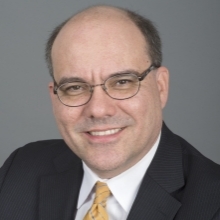Kampung Pelangi (Rainbow village) in Semarang, Central Java, Indonesia. © Ruby Mangunsong/World Bank
Kampung Pelangi (Rainbow village) in Semarang, Central Java, Indonesia. © Ruby Mangunsong/World Bank
No two cities are the same. What does your city mean to you?
For Razi, an 18-year-old waiter in Kuala Lumpur, and millions of other aspirational youth in Malaysia, cities are where their dreams for joining the middle class can come true.
For Liao Xianmei, a 45-year-old migrant worker in Chongqing, China, and Fatma and Peter, a Tanzanian couple who moved from their rural home to Dar es Salaam, cities are where they can build a better future for their families.
And for the world’s 65.6 million forcibly displaced people, finding a city of refuge means a chance to regain strength and dignity.
Today, over four billion people around the world – more than 50% of the global population – live in cities. In East Asia and the Pacific alone, for example, cities house 1.2 billion people – almost rivaling the population of India.
And that number is still fast growing, most rapidly in Asia and Africa, as individuals and families continue migrating to urban areas to seek better livelihoods.
Rapid urbanization: Unprecedented challenges
Being such huge magnets for talent and investment, it is no wonder that cities have become the world’s major growth engine, generating more than 80% of the global GDP, while helping hundreds of millions lift themselves out of extreme poverty.
However, Widening income gaps, worsening pollution, and aging buildings and bridges are all telltale signs that today’s cities are struggling to keep up with city dwellers’ growing dreams for a sustainable, prosperous future.
“We are mostly fishermen and few of us have other skills, so when we have an oil spill or plastics in the water, we lose money,” said Stephen Aji, chief of a fishing community located in one of the largest slums in Lagos, Nigeria.
Climate change further complicates the urbanization challenge.
The New Urban Agenda
All is not lost.
But what happens next is up to us.
The good news is that, as the stakes of urbanization are growing higher, so is the global commitment to making urbanization right.
In October 2016, at the once-in-20-year Habitat III conference, countries around the world endorsed the historic New Urban Agenda, which sets a new global standard for sustainable urban development and guides global efforts to achieve the Sustainable Development Goals in the era of climate change.
Next week, early February 2018, national and city leaders will convene again at the Ninth Session of the World Urban Forum (WUF9) in Kuala Lumpur, Malaysia, to move forward with more in-depth discussions around the theme Cities 2030, Cities for All: Implementing the New Urban Agenda.
The World Bank: Working to build sustainable cities and communities
World Bank-supported operations and technical assistance contribute to the Sustainable Development Goal No. 11 and the implementation of the New Urban Agenda to make cities inclusive, safe, resilient, and sustainable for all.

“As the world’s leading development financier, the World Bank has invested an average of $6 billion per year in urban development and resilience worldwide,” noted Sameh Wahba, World Bank Director of Urban Development, Territorial Development, and Disaster Risk Management. “More than ever, the Bank is committed to helping countries meet critical urbanization demands, and make cities and communities inclusive, resilient, productive, and sustainable for all.”
What will it take?
Three big ideas, countless solutions
At the World Urban Forum, the World Bank will offer three big ideas that are essential for successfully implementing the New Urban Agenda:
The Bank will also be showcasing some of the innovative knowledge and transformative actions that have proven to help end extreme poverty and boost shared prosperity in cities around the world.
Financing the New Urban Agenda
Only 3% of this amount is available through official development assistance (ODA). This means that cities must strengthen municipal finance, while finding new ways to scale up urban infrastructure finance.
Examples include:
Promoting territorial development
Thick and persistent divisions between places doing well and those that are not are exacerbating inequalities and human suffering, fueling discontent and disrupting development. There is urgent need to stimulate sustainable, inclusive economic growth in these lagging lands and urban spaces.
This is where territorial development comes in. It helps us understand cities not only as individual entities, but also the connectivity between them that allows faster economic growth and links people to better jobs.
Building resilience to natural disasters and climate change
As cities grow, so does their exposure and vulnerability to natural disasters.
In recent years, the World Bank has worked in more than 7,000 cities and towns across 130 countries, investing over $4 billion during fiscal year 2017 in disaster risk management, and committing over $50 billion through more than 900 projects with climate-related activities.
The World Bank has also facilitated global partnerships to support countries in their urban resilience work: